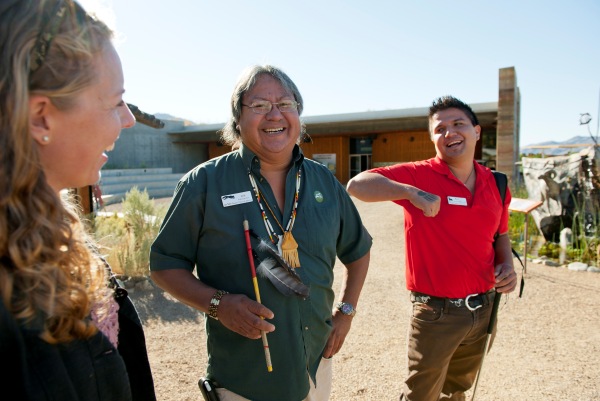June 21 is National Indigenous Peoples Day across Canada—a day to showcase and celebrate the cultural diversity, accomplishments, and contributions of First Nations, Inuit, and Métis peoples.
Indigenous tourism in Canada is thriving, as entrepreneurs and established businesses are reaching new markets and seeing increased demand from established ones. The Indigenous Tourism Association of Canada (ITAC) has set the following targets leading up to 2021: a $300 million increase in the annual Canadian GDP from Indigenous tourism and 50 new Indigenous tourism operators at export-ready status.
Indigenous workers are a particularly important part of tourism’s labour force—from frontline staff to owner/operators to entrepreneurs. Tourism HR Canada will soon release a full profile of Indigenous workers in Canada’s tourism sector, based on the most recent census data. In honour of next week’s celebration, here’s a sneak preview.
- In 2011, there were 57,680 Indigenous workers in tourism. By 2016, that number had grown 30.2% to over 75,000 individuals. For comparison, the number of Indigenous workers across all sectors in Canada grew just 21.5% over the same time frame, highlighting the key role Indigenous peoples are playing in tourism’s growth.
- As a percentage of its labour force, accommodations employs the largest share of Indigenous workers (5.6%), followed by recreation and entertainment (4.2%) and food and beverage services (4.1%).
- Specific occupations where Indigenous peoples make up a high percentage of the workforce are outdoor sport and recreation guides (9.5%) and casino occupations (8.3%).
- By region, Ontario has the largest number of Indigenous workers in tourism, with 19,485 individuals in tourism careers, but it also has the largest number of workers in tourism overall.
- As a percentage of the total workforce, Saskatchewan has the largest Indigenous workforce of the provinces, at 13.1%. The three territories exceed this: Yukon’s share is 13.2%, Northwest Territories’ is 29.2%, and Nunavut’s is significantly more, at 69.8%.
- Since 2011, Indigenous peoples have increased their representation within the tourism labour force in every province.
- A greater percentage of Indigenous tourism workers are female than in the total tourism workforce: 57.5% compared to 51.1%.
- Indigenous youth between the ages of 15 and 24 make up 38.4% of tourism workers, compared to 30.3% for non-Indigenous youth.
The increase in Indigenous individuals working in tourism is impressive, however Indigenous peoples are still underrepresented in the labour market: they make up 4.8% of Canada’s population, but just 4.1% of the tourism labour market. While this is more than the 3.7% in the labour market as a whole, industry associations, businesses, academia, and government need to develop comprehensive strategies to increase workforce participation by Indigenous workers in Canada’s tourism sector. With global interest in Indigenous cultures growing, now is the perfect time to invest in the unique experiences and perspectives offered by Indigenous individuals across Canada.
Watch for the full profile, including infographics and details of current and planned workforce strategies, on tourismhr.ca.
Sign up for HR Insider to get articles like this delivered to your inbox.

